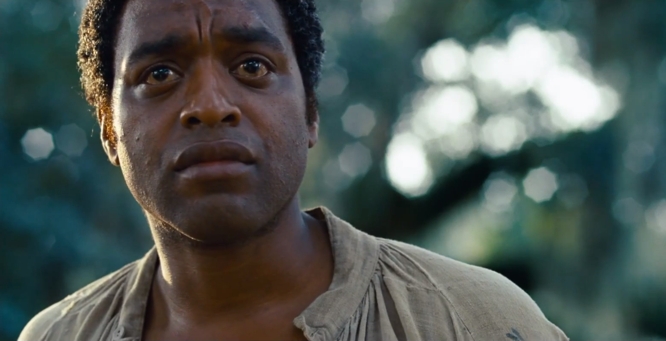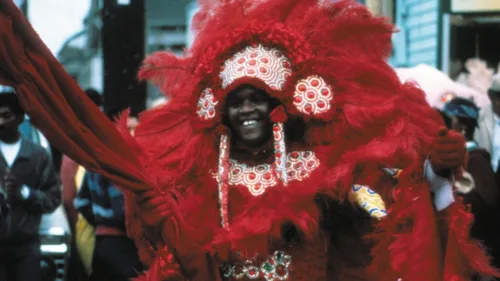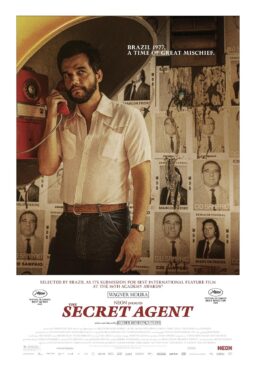I believe in national memory. I
believe in racial memory. “12 Years a Slave” is about both kinds of
memory, and how they are suppressed, and why they are suppressed, and why they
shouldn’t be, and how art can tease them out and look at them
honestly, without flinching.
The film’s script, by John Ridley,
and its direction, by Steve McQueen, treat the experience of Solomon Northup
(Chiwetel Ejiofor), a free man sold into bondage, as a series of meticulously
described visceral moments, like “Pickpocket” or “Taxi Driver”
or “Aguirre: The Wrath of God” or “Apocalypse Now” or
“Born on the Fourth of July.” The movie concentrates on how
experiences looked and sounded and felt. It “remembers” slavery as
individuals remember private traumas, but gives us just enough distance to
process the cruelty. The director’s choreography is so exact that one can
imagine a wooden frame around each image, or a proscenium. The effect is
akin to a series of moving paintings, or long scenes in an opera or a religious
play. The film is pain, transformed into real art, useful art, art that
triggers empathy and understanding. It takes Black history, White history
and American history out of the past and says, “This is happening right
now. To you.” It makes a true story from America’s deep
past feel immediate, so
that the viewer can go beyond, or beneath, the historical aspects, and
understand the lived experience of slavery.
The pre-credits prologue shows
Northup fashioning a makeshift pen from a stick, using a smashed berry for ink,
and trying to record his experiences on parchment, and failing, and tossing the
instrument away and crying, because his tools are too crude. The movie that
follows plays like the psychic rough draft of the story he’ll write later, when
he has regained freedom and had time to heal and reflect. We’re
seeing the intermediate stage of recollection: the jumble of sensations
that memoirists must grapple with before they can shape and contain them with
words.
“12 Years a Slave” envisions Northup’s odyssey
as a series of tableaus of suffering, endured and transcended but never
forgiven. The storytelling is similar to McQueen’s first two features,
“Hunger” and “Shame.” They could all be packaged
together in a “Stations of the Cross” box set. The critic Noel Vera compares the hero of “Shame” to “a pilgrim on a personal Calvary,” and writers, “You get the impression that if McQueen had used unknown actors and just tilted his camera a few inches to the right or left of the shot’s focus, one might mistaken the film for something directed by Robert Bresson–back when Bresson thought there might be such a thing as a human soul worth saving.” These films are about the
landscapes of bodies and spirits tested and twisted, broken and exposed. They’re stripped-down, aestheticized but never prettified, made mythological but never abstract.
Legends and myths and religious fables are remembered not just for their
content but because of how they’re told: directly, always appealing to emotion and what we think of as plain truth.
The truth of “12 Years a
Slave” is basic, a list of experiential facts: Families traded
like livestock, separated and sold. Men and women and children renamed and
brainwashed, worked from dawn to dusk, and awakened from deep sleep, and made
to dance and sing, and told to strip and be whipped, or raped.
Chains on wrist and ankles. Lashes on
the back. Flesh cracked like wet sod. That’s what this country was founded
on, along with ideals of life, liberty and the pursuit of happiness. That’s
what this film is about. That’s what Americans deny when they praise the
ideals of equality while downplaying the gory reality, on grounds that it’s in
the past now, and it doesn’t do anyone any good to “dwell” on it.
“It is a simple fact that what is
true and right is true and right for all,” says a Canadian abolitionist
(Brad Pitt) in a scene late in the film. What is true and right for all is that
slavery and exploitation are evil.
Of course the problem with saying
that is that it invites viewers to brush it off, by saying something like,
“Well, I already know slavery was evil, so I don’t need to see a film
telling me that slavery was evil, and hey, look, a new ‘Hunger Games’
movie.” “12 Years a Slave” pushes past such rationalizations,
not simply by repeating abstractly and distantly that, as a matter of fact yes, slavery was evil, or
by speechifying about it in a way that invites viewers to nod and think,
“Ah, yes, how horrible it was! And what a relief that it’s not happening
here now!” but by showing, in a series of very straightforward and exact
scenes, precisely how slavery was evil—by envisioning its day-to-day
particulars in terms that anyone can understand, even if
they don’t know anything about slavery except that it once existed in the
United States of America, and that the Civil War ended it.
That a film as searing and necessary as “12 Years a Slave” is having trouble drawing large audiences is a testament to the power of denial. That so few mainstream films have been made about slavery is also a testament to the power of denial.
You can tell what a
country finds most shameful in its history by looking at how long it took for that
country’s popular art to begin seriously addressing that history. The first
films about slavery (as opposed to films about the American south that happened
to include slave characters) did not appear until the 1960s, six decades after
the creation of motion pictures. Most of them had elements of genre or
exploitation. Few addressed the subject in a straightforward way. Even the
most high-profile recent film about slavery, “Django Unchained,” gave
itself a cushion of cowboy action and revenge fantasy, even as it depicted the
casual physical savagery of slavery with an unprecedented (for Hollywood)
frankness.
There is no genre cushion in “12
Years a Slave.” None.
It’s simply saying, “Here is the story of a man
who experienced slavery.”
As we watch it, we don’t just
understand Solomon’s experience. We start to grasp why films like this one are
so rare: because Americans do not want to talk about slavery, or think about
slavery, much less pay to see a film about slavery.
It’s too shameful.
Northup plays the fiddle. Northup
gets approached to play the fiddle in Washington, D.C. He is drugged and sold
into slavery in an auction, stripped naked and inspected like a farm animal.
He’s made to work at a plantation run by a master who thinks showing
slaves a glimmer of compassion makes him a good person. Solomon rebels
against an overseer who’s cruel and petty even by the standards of overseers.
He gets sold to a different plantation run by a monstrous man described as a
“n—-r breaker,” and is confronted with the worst of the
many horrible truths he absorbs during his years of bondage: that after a while, this kind of life grinds the righteousness and even the sorrow from everyone, even passionate and moral people, and replaces them with but one desire: to survive.
The master’s indifference to
suffering is passed down to the overseers and plantation workers, and
ultimately to the slaves and their children.
By the end,
Northup, who had previously survived a lynching for daring to fight an
overseer, obeys an order to whip another slave, the new master’s concubine.
There are tears in Solomon’s eyes, but he does as he’s told. He’s learned his lesson. Don’t argue. Don’t question. Look away. Survive.
This is how evil is perpetuated: it
wears people down. They can’t imagine life any other way. They’re afraid.
They’re exhausted. They’re numb. The victims just want to avoid pain or worse. The
perpetrators just want to be able to look at themselves in a mirror and say,
“This is normal behavior. There is nothing unusual about
it.”
Everyone looks away.
When a man arrives at the plantation
bearing proof that Solomon was once a free man and demanding his release, the
master who put that whip in Solomon’s hand reacts with petulant fury, like a
child whose toy is about to be taken from him. Solomon would like to bring other slaves to freedom with him, but he can’t. A series of post-credits titles inform us that Solomon took
his two kidnappers to court but lost the case. He never got justice in the
Hollywood sense. He just had to learn to live with the pain of his experience.
He wrote a book about it, a book that enlightened many people and gained him
some measure of fame, but accolades don’t make whip scars heal.
The film’s greatest scene finds
Solomon hanged by the overseer he attacked, bare
toes on-point in slippery mud, barely saving himself from strangulation.
McQueen holds the shot long after the shock of the hanging has worn off. He keeps holding it after every other dramatically significant participant in the scene has gone
inside. He keeps holding the shot, and holding it.
After a while we see
action return to the background behind Solomon. Workers go on about their
business. A reverse angle puts Solomon in the foreground, out-of-focus, still
dangling from the noose and gasping for breath. Over his shoulder, in focus,
slave children play. We realize this is a normal sight for everyone on the plantation: a
personnel matter. Nobody’s shocked by it, except the man dangling from the
rope.
This is how a film transforms history
into experience. This is how a film explains what slavery meant, not just to
the body, but to the body politic.
It’s not just about the infliction of
pain by oppressors, and the endurance of pain by the oppressed. It’s about
looking away, even if the person being mistreated resembles you, because you’re glad it’s not you. It’s about the entrenched status quo
that lets atrocities continue for years or decades. It’s about
suppression. It’s about denial.
Solomon was twelve years a slave. The
United States was 89 years a slaver.
Slavery didn’t persist for decades because every
living free man and woman in the United States was an irredeemably evil person. It
continued because people got used to it and compartmentalized it. What happened was a national version of the personal denials shown in “12 Years a Slave.”
White people
in free states told themselves, “The country would be better off if
there were no slavery, but it’s been a part of life since the country was
founded, and it’s probably never going away, but at least it’s not legal in my
state.” White people in slave states who did not own slaves told themselves, “I don’t personally own slaves, so I’m not part of the problem,”
while looking away from the scarred men and women clearing underbrush and
picking crops and hoping that somehow, someday they wouldn’t have to see that anymore, or explain it to their children. White people in free
and slave states who could not rationalize or compartmentalize slavery became
abolitionists or helped abolitionists. Free Blacks tried to
forget or distance themselves from the continuing reality of slavery or else worked to end it.
But collectively the nation made
peace with slavery, accepted slavery, for a very long time.
It wasn’t until the two
decades leading up to the start of the Civil War that the majority of Whites began thinking of slavery as anything other than a part of the national
reality, and abolitionist beliefs as anything other than a utopian fantasy, or
a nuisance to commerce.
Part of the genius of “12 Years
a Slave” is its capacity for showing us that this sort of
thinking—characteristic, we like to tell ourselves, of a distant and thoroughly discredited past—continues today, in a watered-down form. We encounter it again
whenever movies such as this one are discussed. Or not discussed. Or avoided.
When a viewer says, “I know
slavery was wrong, so I don’t need to see this film,” or, “I saw scenes from ‘Roots’ in school, I get it,” or “I saw ‘Django
Unchained,’ what is it with all these slavery movies dredging up the
past?” it’s a denial, a suppression.
This happened in the United States of America. Its legacy is all
around us. We need to look. We need to imagine.
In one of the movie’s most
extraordinary close-ups, a traumatized Solomon looks offscreen for a while, his
gaze slowly moving around the edges of the frame, until he seems to
make eye contact with the viewer. You want to reach out to him. You want to
help him. You want to free him. But you can’t. It’s not possible. It’s not done. All you can do is stare into his beseeching eyes.
After a while he gives up and looks
somewhere else.












